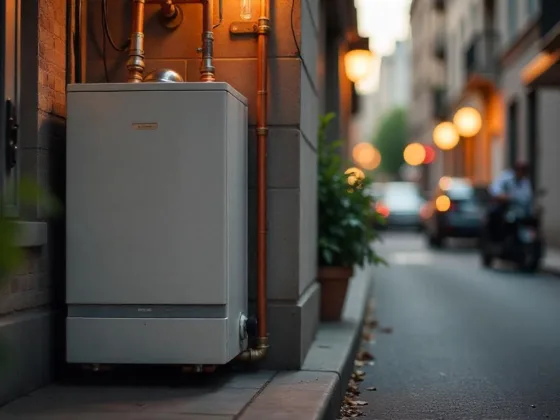Table of Contents Show
From dryer vent cleaning to HVAC upgrades, air quality often starts with the systems you already have at home. Indoor air might look clean, but it can hide a surprising amount of chemical pollution. One of the biggest culprits? TVOCs. These invisible gases come from everyday materials and activities—and unless your HVAC system is set up for more than just heating and cooling, they tend to stick around.
Understanding what TVOC means (and how HVAC can help manage it) is key to creating a healthier, fresher home environment.
What Is TVOC and Why Does It Matter for Indoor Air Quality
TVOC stands for Total Volatile Organic Compounds—a catch-all for hundreds of airborne chemicals that easily evaporate at room temperature. Think of it as a “chemical soup” made up of everything from paint fumes and cleaning products to furniture off-gassing and even scented candles. It’s a complex chemical fingerprint of your home’s personality—how it’s built, what you clean with, and how you live.
Air quality monitors pick up on this because TVOCs affect cognitive function, not just physical health. Even at levels far below the “danger” zone, studies show VOC exposure can reduce your focus, decision-making speed, and even test scores in children.
Unlike CO₂ or dust, which are easier to trace, TVOCs are sneaky—constantly released from everyday materials, often without any noticeable smell. They’re a key indoor pollutant, and that’s why modern monitors flag them. Today’s homes are sealed tighter than ever, making indoor air five times more polluted than outside.
Related reading: Indoor Pollution: What It Is, Effects, and How to Protect Yourself
Common Sources of TVOCs in Homes: Paints, Furniture, and More
TVOCs aren’t rare, they’re everywhere: new furniture, carpet glue, varnished floors, synthetic rugs, aerosol sprays, cooking fumes (especially from oils), nonstick cookware, air fresheners, shampoos, nail polish remover, cleaner, paint cans, solvents, stored gasoline or pesticides, printers, toners, adhesives, laminated furniture.
If it has a scent, a shine, or a label that says “ventilate after use”—it probably emits VOCs. Even such things as morning coffee can spoil your air, roasting beans releases benzene and acrolein—yes, even your favorite espresso machine has a VOC output. Office gadgets off-gas plastics and ozone, especially in small, poorly ventilated work-from-home setups.
Fragrance-layered products, like dryer sheets, scented trash bags, and even “odor-control” litter, can be top TVOC offenders. If it smells like spring in a can? It’s chemistry. Think of VOCs not as a product label, but a byproduct of modern life inside a chemical ecosystem.

Why High TVOC Levels Are a Problem for a Healthy Living Space
You breathe 20,000+ breaths a day—mostly at home. High TVOC exposure can lead to headaches, dizziness, fatigue, eye, nose, and throat irritation, worsening of asthma or allergy symptoms. Think of TVOC levels like indoor noise pollution.
You might not notice it immediately, but over time, it messes with your comfort, focus, and health. Plus, kids and pets are more sensitive due to smaller body mass and higher respiration rates.
Here’s the part no one says: You can’t fix what you don’t track. TVOC levels aren’t just about health—they’re an early warning system for how “stale” your home has become. High VOC levels often point to hidden moisture, poor airflow, or materials breaking down.
So even if you feel fine, high readings can be the canary in the coal mine for mold growth behind walls, furniture degrading prematurely, and airflow imbalance (that can affect your entire HVAC system).
Related reading: How to Improve Air Quality in Your Home
How to Tell If Your Home Has Elevated TVOC Levels
Unless you’ve got a sensitive nose (or symptoms), the only real way is to measure it. Look for air quality monitors that track VOCs in parts per billion (ppb) or micrograms per cubic meter (µg/m³). Many smart home monitors now include this by default.
Red flags without a monitor, strong chemical smells that linger, a headache or stuffy nose that clears when you leave home, new renovations, or furniture that hasn’t aired out. If you’ve just moved into a new build or renovated home, expect a TVOC spike for a few weeks. Feeling foggy, irritable, or tired at home, but not elsewhere? That’s your nervous system reacting to cumulative VOC exposure. It’s not always obvious, but it is consistent.
Track CO₂ levels alongside VOCs. If both are high, you’ve got a ventilation issue. If VOCs spike alone, it’s a source-specific problem—like a product or material off-gassing. Also worth considering: if you’re noticing odd smells (especially a rotten egg or sulfur-like scent), it could signal a gas line issue—not just TVOCs. While natural gas itself is odorless, utility companies add a chemical called mercaptan to make leaks detectable.
Even small leaks can worsen indoor air quality and pose serious health risks. If you suspect anything is off, have your gas lines inspected immediately—this goes beyond air quality and into safety territory.
How HVAC Systems Can Help Control TVOC in the Air
If it’s set up to do more than just heat and cool. Traditional HVAC systems recirculate air, which can trap VOCs unless there’s fresh air intake (mechanical ventilation), advanced filtration (strategically placing returns where VOCs build up—like near bathrooms or the garage entry), and humidity control (drier air can increase VOC off-gassing). Your HVAC system can help if it’s treated as an air quality system.
Best Air Filters and Ventilation Upgrades to Reduce VOCs Indoors
Regular filters (like MERV 8–11) only catch particles, not gases. For VOCs, look into activated carbon filters (they absorb VOCs like a sponge) or ZeoLite filters (they trap a wider range of VOCs, including ammonia-based compounds), photocatalytic oxidation (PCO) units (break down VOCs using UV light and titanium dioxide), whole-home ERVs (swap stale indoor air for filtered outdoor air).
Not every HVAC setup supports these, so a retrofit might be needed—but it’s worth it if clean air is a priority.
Low-VOC Design Tips for a Healthier, More Comfortable Home
Choose low-VOC or zero-VOC paints, adhesives, and finishes—they’re easy to find now. Skip vinyl flooring or pressed wood cabinetry unless they’re certified low-emission. Ventilate aggressively during and after renovations, open windows, run fans, and use an air scrubber if possible. Think of your renovation choices as long-term air quality decisions, not just aesthetic ones.
Built-in storage ventilation. Pantries, utility closets, and under-sink cabinets trap VOCs like vaults. Add a low-power exhaust fan or passive vent to help. Use thermal mass to your advantage.
Materials like concrete or tile can buffer temperature swings that accelerate VOC off-gassing from other surfaces. Keep higher-emission items (like laundry or cleaning supplies) downstream from your main airflow paths. Integrate ventilation into your plans, not just heating and cooling.
Easy Ways to Improve Indoor Air Quality and Lower TVOC Levels
Open the windows for 15–30 minutes a day—weather permitting. Use range hoods and bathroom fans every time you cook or shower. Run your bathroom fan for 15 minutes after using hairspray, shaving cream, or deodorant. VOCs love enclosed spaces.
Ditch synthetic air fresheners and switch to essential oils (used sparingly) or none at all. Add houseplants like spider plants or peace lilies—not miracle workers, but every bit helps. Keep humidity between 30–50% to limit mold and off-gassing. Keep a “quarantine bin” for new products.
Anything that smells strongly (clothes, books, plastics) sits there for a day or two before joining the main house. Set your HVAC fan to “on” for 1 hour after vacuuming. Even HEPA vacuums stir up VOCs from synthetic carpet fibers and dust.
And of course: stop VOCs at the source. Read labels and opt for safer products whenever you can.
FAQs
TVOc stands for Total Volatile Organic Compounds, which are organic chemicals that evaporate into the air and can have adverse health effects.
TVOc levels are crucial as they indicate the presence of harmful pollutants in the air, impacting human health and the environment. High TVOc levels can result in respiratory and other health issues.
TVOc levels are typically measured using specialized air sampling equipment to collect samples. These samples are then analyzed in a laboratory to determine the concentration of volatile organic compounds present.
Common sources of TVOc include vehicle emissions, industrial processes, solvents, paint, cleaning products, and natural sources like plants and vegetation.
To lower TVOc levels indoors, consider using low-VOC or VOC-free products, ensuring proper ventilation, using air purifiers, and refraining from smoking indoors. Regularly checking and maintaining appliances can also help minimize emissions.










